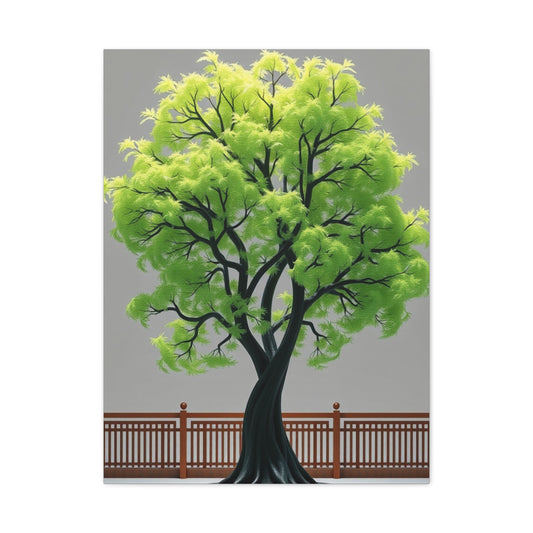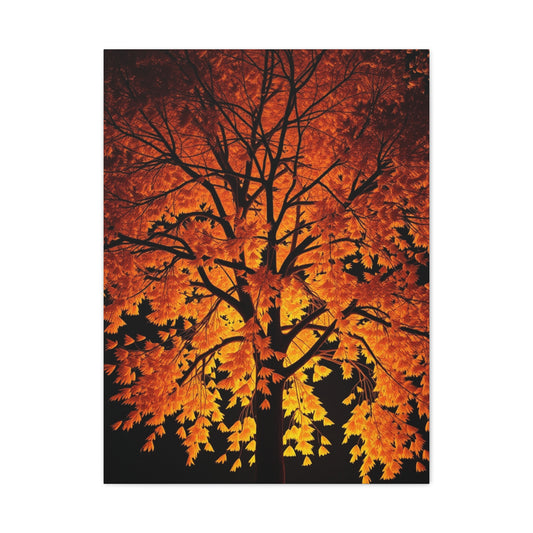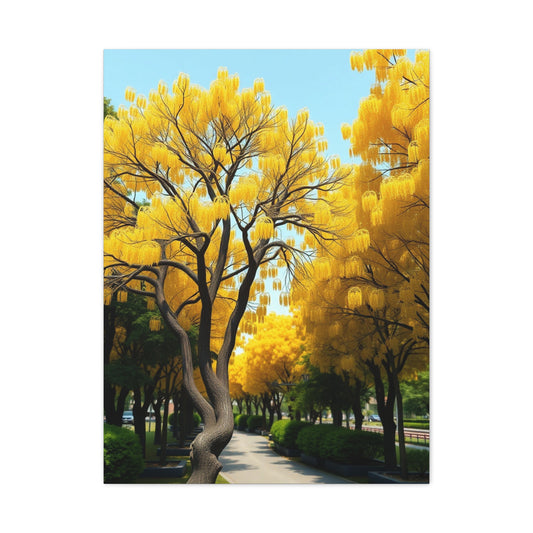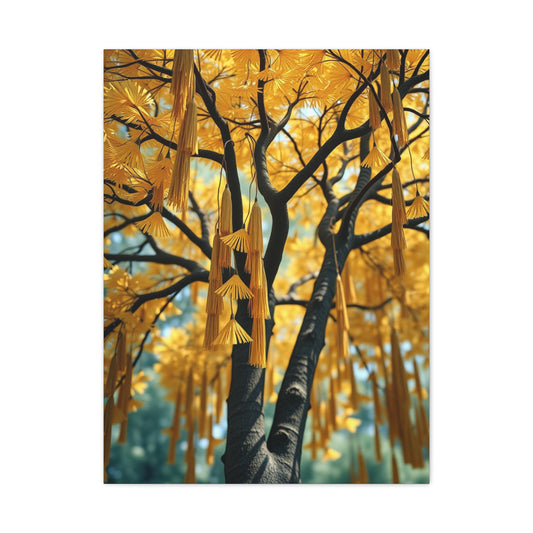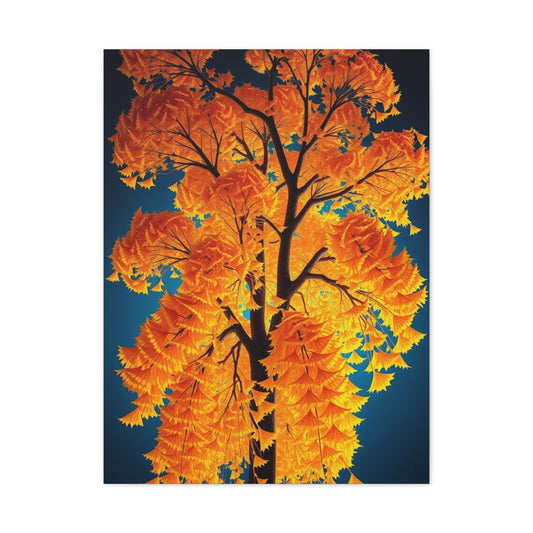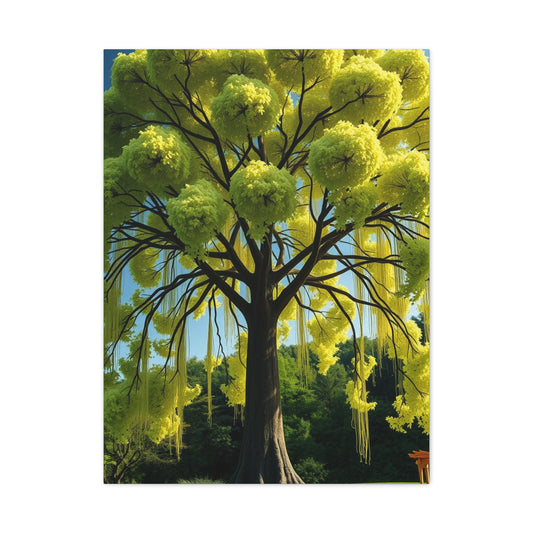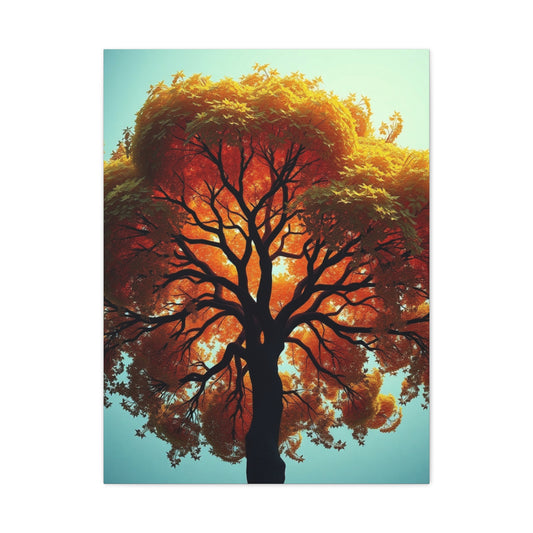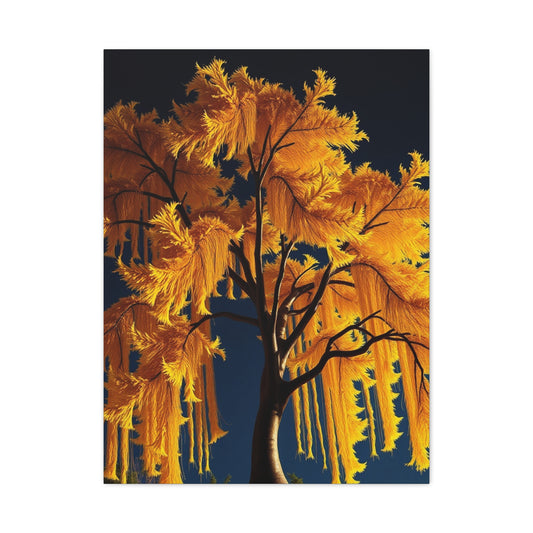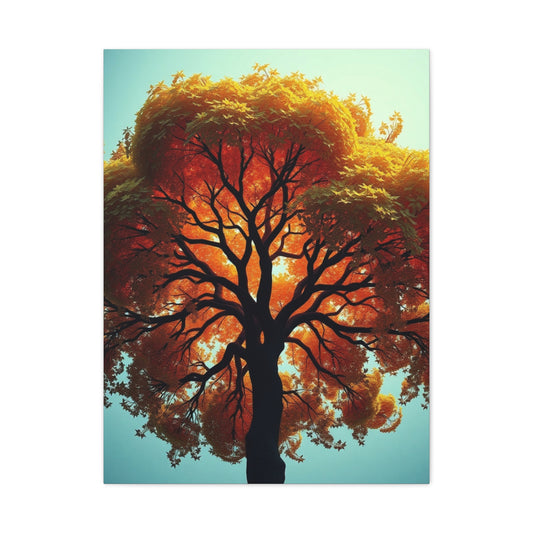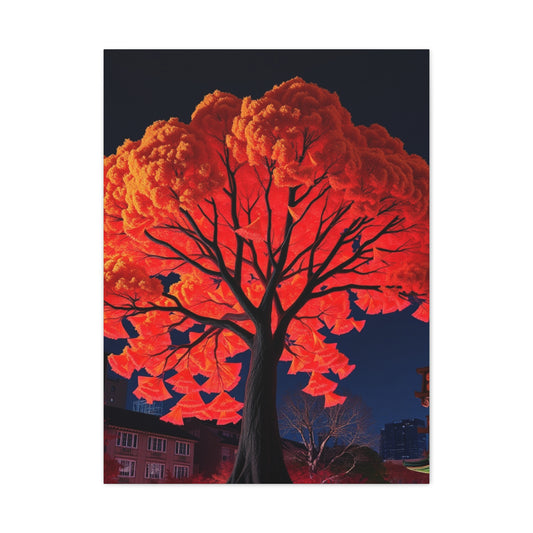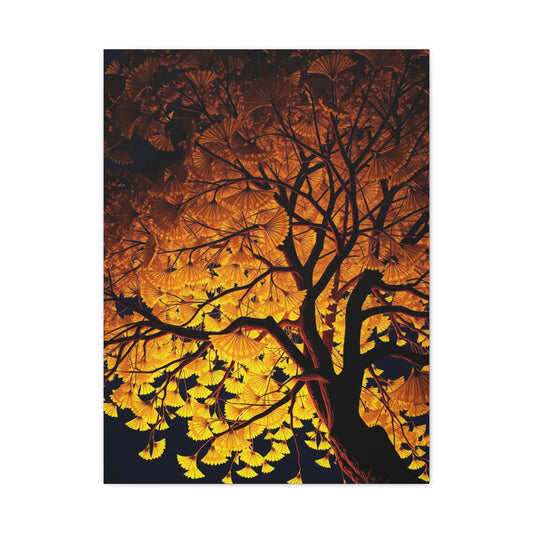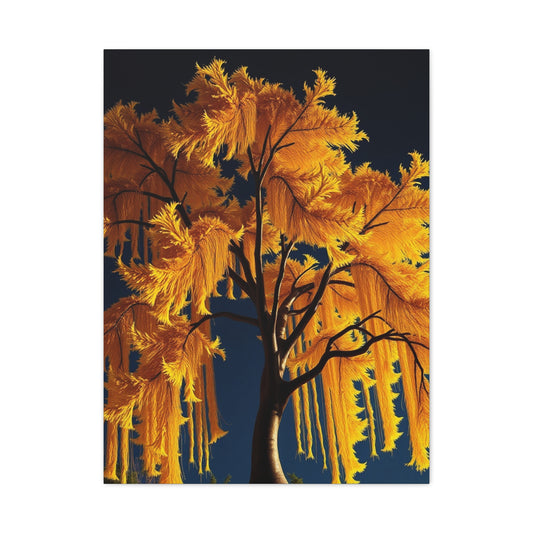The Ultimate Guide to Creating Stunning Ginkgo Tree Wall Art
Discover the mesmerizing world of ginkgo tree wall art and transform your living spaces with the timeless beauty of nature's most ancient survivors. This comprehensive exploration delves deep into the captivating realm of ginkgo-inspired home decor, revealing countless methods to incorporate these magnificent fan-shaped leaves into breathtaking wall displays that celebrate both botanical wonder and artistic expression.
The ginkgo biloba, often referred to as the living fossil, represents one of nature's most extraordinary phenomena. These remarkable trees have graced our planet for over 270 million years, surviving ice ages, volcanic eruptions, and countless environmental changes that eliminated countless other species. Today, these resilient giants offer us something truly special: the opportunity to bring their enduring beauty into our homes through carefully crafted wall art installations.
Creating ginkgo tree wall art represents more than mere decoration; it embodies a connection to ancient wisdom, natural resilience, and the cyclical beauty of seasonal transformation. Whether you're drawn to the vibrant emerald hues of spring growth or the spectacular golden displays of autumn, ginkgo leaves provide an endless source of inspiration for artistic expression.
Magnificent Ginkgo Biloba
The ginkgo biloba stands as one of earth's most remarkable botanical specimens, earning its reputation as a living fossil through its incredible longevity and unique characteristics. These extraordinary trees possess distinctive fan-shaped leaves that immediately distinguish them from any other plant species on our planet. The unmistakable silhouette of ginkgo foliage has captivated artists, botanists, and nature enthusiasts for millennia, making them perfect subjects for wall art creations.
Native to China, ginkgo trees have been cultivated for over 1,000 years, initially prized for their medicinal properties and spiritual significance. Ancient Chinese and Japanese cultures revered these trees as symbols of endurance, vitality, and hope. Buddhist monks particularly cherished ginkgos, planting them around temples and monasteries where many still thrive today, some reaching ages exceeding 1,500 years.
The distinctive morphology of ginkgo leaves makes them instantly recognizable and artistically compelling. Each leaf displays a characteristic fan or butterfly wing shape, often featuring a distinctive notch or split at the center. This unique formation creates natural symmetry that translates beautifully into wall art compositions. The parallel venation pattern running from the petiole to the leaf margin creates elegant linear elements that add sophisticated structure to artistic arrangements.
Ginkgo leaves undergo dramatic seasonal transformations that provide diverse artistic opportunities throughout the year. Spring emergence reveals tender, bright green foliage with a soft, almost translucent quality perfect for delicate wall art pieces. Summer maturation brings deeper, richer green tones that create bold, striking visual statements. However, autumn transformation produces the most spectacular display as chlorophyll breaks down, revealing brilliant golden-yellow pigments that seem to glow with inner light.
The texture of ginkgo leaves adds another dimension to wall art possibilities. Fresh leaves possess a smooth, slightly waxy surface that catches and reflects light beautifully. As they dry, the leaves develop a papery texture that creates interesting shadows and depth variations in artistic arrangements. This textural evolution allows artists to create dynamic pieces that change appearance throughout different lighting conditions and viewing angles.
Size variations among ginkgo leaves provide additional creative flexibility for wall art projects. Individual leaves typically range from two to five inches in width, with some exceptional specimens reaching even larger dimensions. This natural size diversity enables artists to create compositions with varied scale relationships, building visual interest through careful placement of larger focal elements balanced with smaller supporting details.
The Profound Symbolism Behind Ginkgo Trees
Understanding the rich symbolic heritage of ginkgo trees adds profound depth and meaning to wall art creations, transforming simple botanical displays into powerful statements of personal values and cultural appreciation. Throughout history, various cultures have attributed significant meanings to these remarkable trees, creating a tapestry of symbolism that enriches contemporary artistic interpretations.
In Chinese culture, ginkgo trees represent longevity, resilience, and unchanging nature. The tree's remarkable ability to survive adverse conditions while maintaining its essential characteristics has made it a powerful metaphor for human endurance and wisdom gained through experience. Chinese artists have incorporated ginkgo motifs into paintings, ceramics, and architectural elements for centuries, viewing them as embodiments of the connection between earthly existence and eternal principles.
Japanese interpretation of ginkgo symbolism emphasizes harmony, balance, and the beauty of simplicity. The tree's distinctive leaf shape represents the duality of existence - the split often seen in mature leaves symbolizes the balance between opposing forces such as earth and sky, past and future, or strength and flexibility. This philosophical foundation makes ginkgo wall art particularly meaningful in spaces dedicated to meditation, reflection, or peaceful contemplation.
Western cultures have embraced ginkgo trees as symbols of hope, peace, and renewal. The tree's remarkable recovery after the atomic bombing of Hiroshima - where several ginkgo trees survived and eventually flourished despite devastating circumstances - transformed these plants into international symbols of resilience and the possibility of healing even after profound trauma. This powerful association adds emotional depth to ginkgo wall art installations, making them particularly meaningful in healing spaces, memorial gardens, or areas dedicated to personal growth.
The cyclical nature of ginkgo leaf development represents the eternal rhythm of life, death, and rebirth that characterizes natural cycles. Spring emergence symbolizes new beginnings, fresh starts, and unlimited potential. Summer maturation represents the fullness of life, achievement, and the realization of goals. Autumn transformation embodies the beauty of change, the wisdom of letting go, and the preparation for renewal. This seasonal symbolism makes ginkgo wall art particularly appropriate for spaces where people gather to celebrate life transitions, mark important milestones, or simply appreciate the ongoing dance of natural rhythms.
Environmental consciousness has added contemporary symbolic layers to ginkgo trees, representing sustainability, conservation, and the importance of preserving natural heritage for future generations. Their status as living fossils reminds us of our connection to ancient earth processes and our responsibility to protect the natural world. Ginkgo wall art can serve as daily reminders of environmental stewardship and our role as guardians of planetary biodiversity.
Historical Perspectives on Ginkgo Art
The artistic representation of ginkgo trees spans thousands of years, creating a rich historical foundation that informs contemporary wall art creations. Understanding this artistic heritage provides valuable insights into traditional approaches while inspiring innovative modern interpretations that honor historical precedents while embracing contemporary aesthetics.
Ancient Chinese artists first began incorporating ginkgo motifs into their work during the Tang Dynasty (618-907 CE), when these trees gained prominence in imperial gardens and Buddhist temple complexes. Early artistic representations focused on capturing the essential spirit of the tree rather than precise botanical accuracy, emphasizing the philosophical and spiritual significance of ginkgos within broader cultural contexts. These early works established artistic conventions that continue to influence contemporary interpretations.
Song Dynasty (960-1279 CE) artists refined ginkgo representation, developing sophisticated ink painting methodologies that captured both the physical beauty and spiritual essence of these remarkable trees. Master painters like Li Cheng and Guo Xi created influential works featuring ginkgo trees that established visual vocabulary still referenced by contemporary artists. Their approach emphasized the interplay between positive and negative space, using the distinctive leaf shapes to create dynamic compositions that suggested movement and growth.
Japanese artistic traditions embraced ginkgo imagery during the Heian period (794-1185 CE), incorporating these motifs into various art forms including paintings, textiles, ceramics, and architectural decorations. The Japanese aesthetic emphasis on simplicity, asymmetry, and natural beauty found perfect expression in ginkgo leaf patterns. Artisans developed distinctive stylization approaches that abstracted the essential qualities of ginkgo leaves while maintaining their recognizable characteristics.
Medieval European contact with Asian cultures introduced ginkgo imagery to Western artistic traditions, though widespread adoption didn't occur until the 18th and 19th centuries when these trees were successfully cultivated in European gardens. Early Western botanical illustrations focused on scientific accuracy, documenting precise leaf structures and growth patterns. However, romantic and impressionist movements later embraced ginkgos for their aesthetic qualities, incorporating them into landscapes and decorative arts.
Art Nouveau movement (1890-1910) found particular inspiration in ginkgo forms, with designers like Louis Comfort Tiffany and René Lalique creating stunning works that celebrated the organic curves and natural patterns of ginkgo leaves. This period established ginkgo motifs as sophisticated decorative elements suitable for high-end architectural installations, luxury furnishings, and precious objects. The movement's emphasis on flowing lines and natural forms perfectly complemented the graceful silhouettes of ginkgo foliage.
Contemporary art movements have continued exploring ginkgo themes, with artists finding new ways to interpret these ancient symbols through modern media and conceptual frameworks. Environmental art movements particularly embrace ginkgo imagery as representations of ecological awareness and conservation consciousness. Digital art and photography have opened new possibilities for capturing and manipulating ginkgo imagery, creating wall art possibilities that would have been impossible for previous generations.
Seasonal Beauty and Color Variations
The remarkable seasonal transformations of ginkgo trees provide endless inspiration for wall art creations, offering a spectrum of colors, textures, and moods that can enhance any interior space. Understanding these seasonal variations enables artists to create dynamic installations that celebrate the full cycle of natural beauty while providing year-round visual interest.
Spring emergence represents one of nature's most delicate and hopeful displays as ginkgo trees awaken from winter dormancy. New leaves unfurl with tender, translucent qualities that seem to glow with inner light. The pale green coloration of young ginkgo foliage carries subtle variations from chartreuse to sage, creating sophisticated color palettes perfect for wall art installations in spaces requiring gentle, calming influences. Spring ginkgo leaves possess a soft, almost ethereal quality that photographs beautifully and preserves well through various artistic preservation methods.
The texture of spring ginkgo leaves offers unique artistic opportunities, as the tender foliage displays subtle translucency that creates interesting light effects when backlit or positioned near natural light sources. Wall art installations incorporating fresh spring leaves can create living elements that change throughout the day as lighting conditions shift, adding dynamic qualities that static artworks cannot achieve.
Summer maturation brings dramatic changes as ginkgo leaves reach full size and develop their characteristic deep green coloration. The robust color intensity of mature summer foliage creates bold visual statements perfect for contemporary interior designs requiring strong natural elements. Summer ginkgo leaves display remarkable consistency in color and form, making them ideal for geometric arrangements and structured artistic compositions.
The waxy surface quality of mature summer leaves creates interesting light interactions that can be exploited in wall art installations. Strategic positioning relative to light sources can create dramatic shadow patterns and reflected highlights that add depth and movement to static displays. The sturdy nature of summer foliage also makes it excellent for three-dimensional installations and sculptural arrangements that require structural integrity.
Late summer begins the gradual transition toward autumn transformation, creating subtle color shifts that offer unique artistic opportunities. During this transitional period, individual trees and even individual leaves may display multiple color tones simultaneously, creating natural color gradients that inspire sophisticated wall art compositions. Capturing leaves during various stages of color transition enables artists to create installations with built-in tonal variations.
Autumn transformation represents the pinnacle of ginkgo visual drama, as entire trees seemingly ignite with brilliant golden-yellow displays that can be seen from considerable distances. The intensity and uniformity of autumn ginkgo color creates unparalleled opportunities for creating warm, welcoming interior environments. The golden tones complement a wide range of interior color schemes while adding luxury and sophistication to any space.
The ephemeral nature of autumn ginkgo displays adds poignancy and urgency to wall art creation, as the spectacular golden period typically lasts only a few weeks before leaves drop rapidly. This brief but intense period requires careful timing for those seeking to incorporate fresh autumn foliage into artistic installations. However, the dramatic color intensity of autumn leaves preserves exceptionally well through various drying and preservation methods.
Winter presents ginkgo trees in their most architectural form, as bare branches reveal elegant structural patterns that inspire minimalist wall art approaches. The graceful branching patterns of ginkgo trees create sophisticated linear compositions perfect for contemporary interior designs emphasizing clean lines and geometric relationships. Winter photography of ginkgo trees can produce striking black and white images suitable for modern wall art installations.
Collection and Preparation Methods
Successfully creating ginkgo wall art begins with proper collection and preparation of raw materials, requiring careful attention to timing, selection criteria, and preservation methods. Understanding optimal collection practices ensures the highest quality materials while respecting both the trees and surrounding environments.
Timing collection activities appropriately maximizes both the visual impact and longevity of finished wall art pieces. Spring collection should target the brief window when new leaves reach full size but retain their tender, translucent qualities. This typically occurs three to four weeks after initial emergence, varying with local climate conditions and specific tree characteristics. Spring leaves collected at optimal timing preserve well and maintain their delicate coloration through various preservation processes.
Summer collection offers the longest harvest window, as mature leaves maintain consistent quality for several months. The best summer specimens display uniform green coloration without insect damage, disease spots, or mechanical injury. Collecting during dry weather conditions prevents moisture-related deterioration during processing and ensures better adhesion in mounting applications.
Autumn collection requires precise timing to capture leaves at peak color intensity before natural drop begins. The optimal collection window typically spans seven to ten days when trees display maximum color saturation but leaves remain firmly attached. Early morning collection often yields the best specimens, as overnight moisture helps maintain leaf flexibility while morning light reveals color nuances not visible at other times.
Selection criteria significantly impact the quality and visual appeal of finished wall art installations. Premium specimens display perfect or near-perfect symmetry, with both halves of the fan-shaped leaf developing equally. The characteristic central notch should be clearly defined without excessive tearing or irregular edges that might indicate damage or disease. Size consistency within individual projects helps create cohesive visual statements, though planned size variations can add dynamic interest to larger installations.
Color uniformity within selected leaf groups ensures consistent visual impact in finished pieces, though subtle variations can add natural authenticity to artistic arrangements. Avoiding leaves with brown spots, holes, or other damage marks maintains professional appearance standards while ensuring longevity of preserved materials.
Immediate handling following collection significantly affects final quality outcomes. Freshly collected leaves should be kept cool and slightly moist during transport to prevent wilting or premature drying. Placing specimens between layers of damp paper towels within sealed containers maintains optimal condition during the journey from collection site to preparation area.
Cleaning collected specimens removes surface debris and potential contaminants that might affect preservation processes or finished appearance. Gentle washing with cool water and soft brushes removes dirt, dust, and small insects without damaging delicate leaf structures. Thorough but gentle drying prevents water damage during subsequent preservation steps.
Sorting specimens by size, color, and quality enables efficient workflow during artistic creation while ensuring consistent results within individual projects. Creating separate groups for different intended uses - such as pressed specimens for framing versus three-dimensional installations - streamlines subsequent preparation processes and reduces waste of premium materials.
Storage of prepared specimens requires careful attention to environmental conditions that prevent deterioration while maintaining accessibility for artistic projects. Cool, dry conditions with stable temperature and humidity levels preserve leaf quality for extended periods. Acid-free storage materials prevent chemical degradation that could affect color stability and structural integrity over time.
Pressing and Drying Methodologies
Proper pressing and drying represent fundamental skills for creating high-quality ginkgo wall art, transforming fresh botanical specimens into stable materials suitable for long-term display. Mastering these preservation methodologies ensures professional results while maintaining the natural beauty and integrity of the original plant materials.
Traditional pressing methods utilize the time-tested approach of applying controlled pressure over extended periods to gradually remove moisture while flattening specimens into suitable forms for mounting and display. The basic principle involves positioning fresh leaves between absorbent materials under steady weight, allowing natural dehydration processes to stabilize the plant tissues while preventing unwanted curling or distortion.
Selecting appropriate absorbent materials significantly impacts pressing quality and efficiency. Newspaper provides readily available, economical absorption capacity, though its acidic content may affect long-term color stability in preserved specimens. Blotting paper offers superior absorption with neutral pH characteristics that better preserve natural coloration over time. Specialized botanical pressing papers provide optimal performance for serious artists willing to invest in premium materials.
Layering sequences affect both pressing efficiency and final quality outcomes. Positioning single leaf layers between individual absorbent sheets prevents sticking and ensures uniform pressure distribution across all specimens. Alternating leaf orientations within stacked layers prevents thickness variations that could create uneven pressing pressure and result in poorly flattened areas.
Weight application requires careful consideration of pressure intensity and distribution patterns. Excessive pressure can damage delicate leaf structures or create unwanted creasing, while insufficient weight fails to achieve proper flattening and moisture removal. Heavy books provide convenient, evenly distributed pressure for small quantities, while dedicated flower presses offer superior control and capacity for larger projects.
Monitoring progress during pressing periods prevents over-processing while ensuring complete moisture removal. Most ginkgo specimens require two to four weeks for complete pressing, depending on initial moisture content, pressing conditions, and desired final characteristics. Checking specimens weekly allows for adjustments in absorbent materials and prevents development of mold or other moisture-related problems.
Accelerated drying methods can reduce processing time while maintaining quality for urgent projects or large-scale productions. Gentle heat application through specialized plant dryers or modified food dehydrators can reduce pressing time to several days without compromising structural integrity. However, rapid drying may affect color intensity and should be tested on sample specimens before processing large quantities.
Microwave pressing offers extremely rapid processing for small quantities, typically completing the process within minutes rather than weeks. This method requires careful power control and frequent monitoring to prevent overheating that could damage or discolor specimens. Specialized microwave pressing equipment provides better results than improvised setups, though initial investment may be significant for casual users.
Chemical preservation methods can supplement or replace traditional pressing for specific applications requiring enhanced durability or color retention. Glycerin solutions replace natural plant moisture with stable preservatives that maintain flexibility while preventing decay. This approach works particularly well for specimens intended for three-dimensional installations where flexibility is desirable.
Quality assessment of pressed specimens involves evaluating multiple factors that affect final artistic results. Properly pressed leaves should be completely flat without curled edges or raised areas that could create mounting difficulties. Color should remain vibrant and natural without browning or fading that indicates improper processing conditions.
Flexibility testing ensures adequate moisture removal without over-drying that could cause brittleness and breakage during handling or mounting procedures. Properly processed specimens should be dry to the touch but retain enough flexibility to withstand careful manipulation during artistic arrangement and mounting processes.
Storage of pressed specimens requires careful attention to environmental conditions that maintain quality while preventing deterioration. Pressed leaves should be stored flat between acid-free papers in cool, dry locations with stable environmental conditions. Proper labeling with collection dates and location information helps maintain organization and enables quality tracking over time.
Mounting and Display Considerations
Creating professional-quality ginkgo wall art installations requires careful attention to mounting and display methodologies that preserve specimen integrity while maximizing visual impact. Understanding various mounting approaches enables artists to select optimal methods for specific projects while ensuring long-term durability and aesthetic appeal.
Adhesive selection significantly impacts both immediate mounting success and long-term preservation of botanical specimens. Acid-free mounting adhesives prevent chemical degradation that could cause discoloration or structural damage over time. Reversible adhesives allow for future adjustments or conservation treatments without damaging original specimens, making them preferable for valuable or irreplaceable materials.
pH-neutral mounting options provide excellent long-term stability while maintaining flexibility for various artistic approaches. Photo mounting sprays offer convenient application and repositioning capabilities during initial placement, while permanent adhesion develops over time. Double-sided mounting tapes provide precise placement control and immediate bonding for geometric arrangements requiring exact positioning.
Water-based adhesives avoid solvent-related damage that could affect delicate leaf structures or cause color bleeding in sensitive specimens. However, moisture content in water-based products requires careful application to prevent rehydration of dried specimens that could cause curling or distortion during the curing process.
Substrate selection influences both the aesthetic impact and preservation quality of mounted specimens. Acid-free mounting boards provide stable, archival-quality foundations that prevent chemical interactions while offering various color and texture options to complement botanical elements. Museum-quality substrates ensure maximum longevity for valuable installations while providing professional presentation standards.
Canvas substrates offer textural interest and natural appearance that complements botanical themes, though proper preparation is essential to ensure adequate adhesion and prevent fabric weaving from showing through transparent leaf areas. Priming canvas surfaces with appropriate sealers creates smooth mounting surfaces while maintaining the natural character of fabric substrates.
Paper substrates provide economical options suitable for temporary displays or experimental projects where longevity is less critical than immediate visual impact. High-quality art papers offer excellent color reproduction and texture varieties that can enhance botanical presentations while remaining cost-effective for large installations.
Spacing considerations affect both visual impact and preservation outcomes in multi-specimen installations. Adequate spacing between individual elements prevents overcrowding while allowing each specimen to maintain its distinct character within the overall composition. However, spacing patterns should create visual connections that unify individual elements into cohesive artistic statements.
Geometric spacing patterns create formal, contemporary appearances suitable for modern interior designs emphasizing clean lines and structured arrangements. Regular intervals and consistent alignments produce sophisticated presentations that emphasize the natural symmetry of ginkgo leaf forms while maintaining orderly visual organization.
Organic spacing patterns reflect natural growth patterns and create more relaxed, naturalistic presentations suitable for traditional or casual interior designs. Varied spacing and asymmetrical arrangements suggest natural distribution patterns while maintaining overall balance and visual harmony within the composition.
Layering methodologies add dimensional interest and visual depth to flat mounting installations. Overlapping specimens create shadow patterns and spatial relationships that suggest three-dimensional growth patterns while maintaining the practical advantages of flat mounting systems. Strategic positioning of overlapped elements can create focal points and guide viewer attention through complex compositions.
Matting and framing considerations protect mounted specimens while providing finished presentation suitable for formal display environments. Proper matting creates protective air spaces that prevent direct contact between specimens and glazing materials while providing visual borders that focus attention on botanical elements.
Conservation framing standards ensure maximum protection and longevity for valuable installations through use of UV-filtering glazing, acid-free materials, and sealed environments that prevent atmospheric contamination. While conservation framing represents significant additional investment, the protection provided justifies the cost for important or irreplaceable installations.
Shadow box mounting creates three-dimensional display opportunities that showcase the natural form and texture of botanical specimens more effectively than flat mounting approaches. Varied mounting depths within shadow boxes can create layered compositions with enhanced visual interest and realistic spatial relationships between elements.
Lighting considerations significantly affect both the immediate visual impact and long-term preservation of displayed specimens. Natural light exposure should be minimized to prevent UV damage and fading, while artificial lighting should utilize LED sources that produce minimal heat and UV emissions.
Framing Strategies for Maximum Impact
Professional framing transforms ginkgo leaf installations from simple craft projects into sophisticated art pieces worthy of prominent display in any interior environment. Understanding framing principles and options enables artists to create presentations that enhance the natural beauty of botanical specimens while providing appropriate protection and visual context.
Frame style selection should complement both the botanical subject matter and the intended display environment while avoiding competition with the natural beauty of the ginkgo specimens. Simple, understated frame profiles allow the botanical elements to remain the focal point while providing necessary structural support and protection. Contemporary metal frames offer clean lines and neutral appearance that work well with both traditional and modern interior designs.
Wood frame options provide natural warmth that complements botanical themes while offering extensive variety in species, finishes, and profile configurations. Light-colored woods such as maple or ash create bright, fresh presentations suitable for spring and summer ginkgo displays, while richer woods like walnut or cherry provide sophisticated settings for autumn specimens.
Color coordination between frame finishes and specimen colors can enhance overall visual harmony or create interesting contrast effects depending on artistic intent. Neutral frame colors allow maximum flexibility in display environments and prevent dating that might occur with more specific color choices. However, carefully selected colors can create dramatic presentations that emphasize particular aspects of the botanical specimens.
Matting decisions significantly impact both the visual presentation and protection of framed botanical specimens. Proper matting creates visual breathing space around specimens while preventing direct contact with glazing that could cause condensation damage or pressure marks on delicate leaf surfaces.
Double matting creates sophisticated depth effects while providing enhanced protection through multiple barrier layers. Color coordination between mat layers can create subtle visual transitions that enhance the overall presentation without overwhelming the botanical elements. Textured mat surfaces add tactile interest that complements the natural textures of leaf specimens.
Conservation matting utilizes acid-free materials and appropriate thickness to ensure maximum protection and longevity of valuable specimens. While conservation materials represent additional investment, the protection provided justifies the cost for important installations intended for permanent display.
Glazing options balance protection requirements with visual clarity and aesthetic considerations. Standard glass provides excellent clarity and protection from dust and handling damage, though weight considerations may limit its use in large installations. UV-filtering glass prevents damaging radiation exposure that could cause fading or degradation over time.
Acrylic glazing offers lighter weight and greater impact resistance than glass while providing comparable optical clarity and protection characteristics. Anti-reflective coatings on acrylic glazing reduce glare and improve visibility under various lighting conditions, though these specialized coatings represent additional expense that may not be justified for all installations.
Museum glass provides the ultimate in protection and optical clarity through advanced anti-reflective and UV-filtering properties. While significantly more expensive than standard glazing options, museum glass creates virtually invisible protection that allows unimpeded viewing of botanical specimens while providing maximum preservation benefits.
Mounting depth considerations affect both the visual impact and practical installation requirements of framed botanical art. Standard picture frame depths work well for pressed specimens mounted on traditional substrates, while shadow box configurations accommodate three-dimensional arrangements and textural variations in specimen thickness.
Custom mounting depths can be created for specific installations requiring unusual clearances or special display effects. However, custom configurations typically require professional framing services and represent significant additional investment compared to standard depth options.
Hanging hardware selection should provide secure, stable support while accommodating the specific weight and size characteristics of framed installations. Professional hanging systems distribute weight evenly and provide adjustability for precise leveling and positioning. Security considerations may require specialized hardware for valuable installations in public spaces or high-traffic environments.
Wall preparation ensures proper support and protection for both the framed artwork and the wall surfaces. Appropriate anchoring systems prevent damage to wall materials while providing secure mounting that prevents movement or shifting over time. Professional installation may be advisable for large or valuable installations requiring precise positioning and secure mounting.
Shadow Box Creation Methods
Shadow box displays offer exceptional opportunities for creating three-dimensional ginkgo art installations that showcase the natural form, texture, and spatial relationships of botanical specimens more effectively than traditional flat mounting approaches. Mastering shadow box construction and arrangement principles enables artists to create sophisticated presentations that capture the essence of living plants while providing stable, long-term display formats.
Box construction begins with selecting appropriate materials and dimensions that accommodate the intended specimens while providing adequate depth for effective visual presentation. Standard commercial shadow boxes offer convenient, economical solutions for smaller projects, though custom construction may be necessary for unique sizes or specialized requirements.
Wood construction provides maximum flexibility for custom dimensions and configurations while offering natural warmth that complements botanical themes. Pine and poplar represent economical choices for basic construction, while hardwoods such as oak or maple provide enhanced durability and refined appearance suitable for premium installations. Proper joinery methods ensure structural integrity while preventing warping or separation that could compromise specimen protection.
Metal shadow box construction offers contemporary appearance and exceptional durability, though specialized tools and techniques may be required for proper assembly. Aluminum frames provide lightweight construction with excellent corrosion resistance, while steel frames offer maximum strength for large installations requiring significant structural support.
Depth planning determines both the visual impact and practical requirements of shadow box installations. Minimum depths of two inches accommodate most pressed ginkgo specimens with adequate clearance for glazing and backing materials, while deeper boxes enable more complex three-dimensional arrangements incorporating multiple layers and varied specimen orientations.
Background selection significantly influences the overall visual impact and mood of shadow box presentations. Neutral backgrounds allow botanical specimens to remain the primary focus while providing subtle contrast that enhances specimen visibility. Textured backgrounds add visual interest and depth while complementing the natural textures of leaf specimens.
Color coordination between backgrounds and specimens can create harmonious presentations or dramatic contrast effects depending on artistic intent. Light backgrounds enhance the visibility of darker specimens while creating bright, airy presentations suitable for contemporary interior designs. Darker backgrounds provide sophisticated contrast for lighter specimens while creating more intimate, dramatic presentations.
Fabric backgrounds offer textural variety and color flexibility while providing soft, natural appearance that complements botanical themes. Linen and cotton fabrics provide subtle textures that enhance presentations without competing with specimen details, while silk and other luxury fabrics create elegant presentations suitable for formal display environments.
Paper backgrounds provide economical options with extensive color and texture varieties suitable for experimental projects or temporary installations. Handmade papers offer unique textures and natural appearance that enhance botanical presentations, while specialized art papers provide consistent quality and archival characteristics for permanent installations.
Specimen arrangement within shadow boxes requires careful consideration of spatial relationships, visual balance, and thematic coherence to create effective artistic compositions. Central focal points draw viewer attention while supporting elements provide context and visual interest throughout the composition. Asymmetrical arrangements often create more dynamic and naturalistic presentations than rigidly symmetrical layouts.
Layering specimens at varied depths creates realistic spatial relationships while maximizing the three-dimensional possibilities of shadow box formats. Foreground elements should complement rather than obscure background specimens, while middle-ground elements provide transitional connections that unify the overall composition.
Mounting methodologies within shadow boxes must accommodate three-dimensional positioning while ensuring secure attachment that prevents movement or shifting over time. Clear mounting threads or transparent supports maintain specimen positioning without creating visible mechanical elements that could detract from natural appearance.
Adhesive mounting directly to background surfaces works well for specimens intended to remain in fixed positions throughout the display period. However, reversible mounting methods allow for future rearrangement or conservation treatments without damaging original specimens or background materials.
Wire armature systems enable complex three-dimensional positioning while providing stable support for delicate specimens. Thin gauge wire creates minimal visual impact while providing flexible positioning capabilities that can accommodate natural growth patterns or artistic arrangement concepts.
Lighting integration within shadow boxes can dramatically enhance visual impact while highlighting specific features or creating mood effects that complement the botanical theme. LED strip lighting provides energy-efficient illumination with minimal heat generation that prevents specimen damage or degradation over time.
Backlighting creates dramatic silhouette effects that emphasize the distinctive shapes of ginkgo leaves while creating luminous presentations that draw viewer attention. Front lighting provides more natural appearance while ensuring clear visibility of specimen details and surface characteristics.
Conclusion:
The process of creating ginkgo tree wall art is more than an exercise in decoration—it is an act of honoring one of the most enduring and symbolic trees in human history. As this guide has shown, every step, from collecting leaves to mounting them in thoughtful compositions, is an opportunity to connect with nature, history, and artistry in ways that are deeply personal and profoundly meaningful.
The ginkgo tree itself is a timeless symbol. Known for its resilience, longevity, and beauty, it represents qualities that resonate across cultures: strength in adversity, harmony in balance, and the quiet majesty of the natural world. When you bring ginkgo imagery into your home, you are not merely hanging art on a wall—you are inviting these symbolic qualities into your daily life. Each piece becomes a reminder of endurance, beauty, and the seasonal rhythms that shape our environment.
From a creative perspective, ginkgo wall art provides an endless palette of possibilities. The fan-shaped leaves lend themselves to both realistic botanical studies and highly stylized abstract interpretations. Whether crafted with pressed leaves, hand-painted canvases, metallic embellishments, or digital prints, each medium captures a different dimension of the ginkgo’s elegance. This flexibility ensures that ginkgo art can fit seamlessly into any interior style—from minimalist modern spaces to richly traditional rooms—adding depth and sophistication wherever it is placed.
Beyond aesthetics, the process of crafting ginkgo art offers significant emotional and therapeutic value. Collecting leaves in the crisp air of autumn, carefully arranging them into patterns, or painting their unique contours can serve as a form of mindfulness practice. These quiet acts of creation provide a welcome escape from the pace of modern life, grounding the artist in the present moment while fostering a sense of accomplishment and calm.
Equally important is the opportunity to make ginkgo wall art uniquely personal. Each design can reflect the creator’s interpretation of the tree’s symbolism—whether resilience in the face of challenges, appreciation for fleeting beauty, or a celebration of cultural heritage. Shared with family or friends, these artworks can become lasting heirlooms, carrying forward not only the natural beauty of the ginkgo but also the memory of the creative journey itself.
In the end, ginkgo tree wall art embodies the union of nature and human imagination. It transforms the enduring legacy of the world’s oldest living tree into a form of contemporary expression, bringing together history, symbolism, and creativity. By embracing this art form, you are not only enriching your surroundings but also participating in a timeless dialogue between humanity and the natural world—a dialogue that celebrates resilience, beauty, and the eternal cycle of life.

